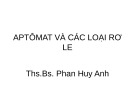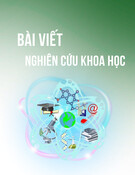
http://www.iaeme.com/IJM/index.asp 42 editor@iaeme.com
International Journal of Management (IJM)
Volume 9, Issue 1, Jan–Feb 2018, pp. 42–49, Article ID: IJM_09_01_008
Available online at
http://www.iaeme.com/ijm/issues.asp?JType=IJM&VType=9&IType=1
Journal Impact Factor (2016): 8.1920 (Calculated by GISI) www.jifactor.com
ISSN Print: 0976-6502 and ISSN Online: 0976-6510
© IAEME Publication
ROLE OF TELEMEDICINE IN INDIAN
HEALTHCARE SYSTEM
Anam Faruqi
Postgraduate Student, Department of Business Administration,
Institute of Chartered Financial Analysts of India, Gangtok, Sikkim, India
ABSTRACT
Telemedicine is remote diagnosis and treatment of patients by means of
telecommunications technology. It holds a great potential to improve the quality,
access and affordability of healthcare. This paper analyses the contribution of both
public and private sector in making telemedicine an alternate way of providing
healthcare services especially in rural India.
Key words: ALTHEA, CISCO Virtual Expertise Digital Solution, ISRO model of
telemedicine, Medintegra WEB, Telemedicine.
Cite this Article: Anam Faruqi, Role of Telemedicine in Indian Healthcare System.
International Journal of Management, 9 (1), 2018, pp. 42–49.
http://www.iaeme.com/IJM/issues.asp?JType=IJM&VType=9&IType=1
1. INTRODUCTION
India faces a great challenge of providing affordable healthcare to all. About 67% of the total
population lives in rural areas. Healthcare system in these areas has to cope up with lot of
problems like severe shortage of healthcare professionals, lack of medical facilities, basic
infrastructure etc. About 60-80 % of the physician positions in different specialties are vacant
in rural healthcare services. According to a study conducted in 2009 by the Indian Medical
Society, 75% of the qualified consulting doctors in India reside in urban areas, 23% in semi-
urban areas and only 2% in rural areas. In such a scenario, telemedicine can play a pivotal role
in providing healthcare services to rural population of India.
2. METHODOLOGY
Information on different aspects of telemedicine has been collected through email interviews
of the two doctors. One is Dr. Arjun Agarwal, Surgical Oncologist and associated with Varun
Arjun Medical College and Rohilkhand Hospital in Shahjahanpur, U.P. and other is Dr.
Naheed Rizvi, Senior Consultant at MLG District Women Hospital in Aligarh, U.P. Also
material is collected by visiting official websites of Ministry of Health and Family Welfare,
ISRO, Apollo Hospitals, World Health Partners, Narayana Health, Sankara Nethralaya etc and
analyzed their contribution in the field of telemedicine.

Role of Telemedicine in Indian Healthcare System
http://www.iaeme.com/IJM/index.asp 43 editor@iaeme.com
3. LITERATURE REVIEW
In [1] author believed that telemedicine has gained tremendous popularity in developing
countries where rural population is deprived access to even basic healthcare. According to the
author, telemedicine market has witnessed spectacular growth lately mainly because of
convergence of Information Technology Communication and Healthcare.
In [2] authors felt that telemedicine may be as simple as two health professionals
discussing a case over the telephone or as complex as using satellite technology and video
conferencing equipment to conduct a real time consultation between medical specialists in
two different countries. The authors concluded that the implementation of telemedicine in
routine health services is being impeded by the lack of scientific evidence for its clinical and
cost effectiveness.
In [3] authors opined that using a number of high speed satellite and terrestrial
telecommunications links, centralization and coordination of resources and support of
government, it has been possible to reach and access the Indian population spread out in
heterogeneous geography and thus achieve the goal of health for all. However, all the
activities need to be evaluated in a national framework and many issues, such as national e-
health policy and legal/ethical issues need to be addressed.
4. TELEMEDICINE IN INDIA
Telemedicine aims at providing technology based primary healthcare services at minimal
costs in those parts of India where basic medical facilities are not easily accessible.
There are two types of technology used in telemedicine. The first is Asynchronous type
technology in which pre recorded data is exchanged between two or more individuals at
different times and locations. This technology is also called ‘store and forward’ Digital
camera is used to take digital images which are stored and then forwarded to another location
by a computer. This technology is used in tele-radiology, tele pathology and tele dermatology
etc. The other is Synchronous type technology in which real time data is exchanged. The
patient or the telemedicine coordinator is at one site and the specialist at the referral site. Both
the locations are equipped with videoconferencing facility that allows a real time consultation
to take place. This technology is preferred in psychiatry, internal medicine, pediatrics,
cardiology, obstetrics and gynaecology, neurology etc.
In India, the first telemedicine pilot project was started by ISRO in collaboration with
Apollo Hospitals Group in 2001, under which a telemedicine link was established between an
Apollo rural hospital at Aragonda village in the Chittor district of Andhra Pradesh and the
Apollo hospital at Chennai. ISRO provided the necessary communication links via its INSAT
satellites while Apollo group equipped their hospitals with desired medical infrastructure.
Since then various government agencies like Department of Information Technology and
Ministry of Health and Family Welfare, State governments, Premier medical and technical
institutions, Private hospitals and Companies of India have taken several initiatives with the
aim of providing quality healthcare facilities to rural and remote parts of the country.
Telemedicine service providers have to deal with many complex issues like availability of
technology at reasonable cost, interruption in power supply, lack of trained manpower,
availability of funds, data privacy and security concerns.
Telemedicine has many advantages associated with it. Telemedicine eliminates distance
barriers and improves access to quality health services for the population living in

Anam Faruqi
http://www.iaeme.com/IJM/index.asp 44 editor@iaeme.com
underserved areas. It is also helpful in critical care situations where moving a patient is
undesirable or not feasible. Around 40% of Indian households report of having borrowed or
sold assets to pay for hospitalization expenditure. For rural population paying out of pocket
for healthcare is a major burden. Telemedicine can bring some relief to them. Tele-education
and tale CME upgrade the knowledge of the rural physicians.
4.1. Indian Space Research Organization (ISRO)
ISRO has deployed a SATCOM based telemedicine network across the country. It has started
a telemedicine program in 2001 with the aim to connect remote, rural healthcare providers to
major specialty hospitals in cities and towns through the Indian satellites. The states and
regions that are covered under this program includes Jammu & Kashmir, Ladakh, Andaman &
Nicobar Islands, Lakshdweep Islands, North Eastern States, tribal districts of Kerala,
Karnataka, Chattisgarh, Punjab, West Bengal, Odisha, Andhra Pradesh, Maharashtra,
Jharkhand and Rajasthan. Presently, the telemedicine network of ISRO covers about 384
hospitals with 60 specialty hospitals connected to 306 remote/rural/district/medical college
hospitals and 18 mobile telemedicine units.
4.2. ISRO model of telemedicine
ISRO uses a multi-point to multi-point system. Computers at a specialty hospital connect to a
common terminal which links via satellite to rural district hospitals and clinics that have ISRO
connectivity in space. To build on ISRO terminal, medical centers have to pay a substantial
up-front-cost (around 600,000 INR). But once built, the ISRO network is provided as a free
service for hospitals that are linked to rural telemedicine centers.
In 2001, ISRO, Department of Space (DOS) and the North Eastern Council (NEC)
collaborated to establish North Eastern Space Applications Centre (NESAC). NESAC started
an ISRO-NEC telemedicine project in 2004 utilizing satellite communication through very
small aperture terminal (VSAT). They formulated a plan to commission 72 telemedicine
regional nodal centers in all districts of north eastern states like Assam, Arunachal Pradesh,
Manipur, Mizoram, Meghalaya, Nagaland, Tripura and Sikkim. Around 25 regional
telemedicine centers have been commissioned and remaining 47 are in various stages of
implementation.
Another telemedicine project known as Army Telemedicine Network for NER is also
operational in the north eastern states in collaboration with Indian Army form March 2008.
Under this network a total of 6 telemedicine centers have been commissioned in various army
hospitals in the north eastern region.
Tripura, one of the north eastern states of India, has set an example of successful
implementation of telemedicine program in the country. In Tripura, telemedicine set up has
been implemented at 27 hospitals including 3 referral hospitals and 24 nodal hospitals. All
these centers are interconnected with internet speeds of 512Kbps/2Mbps for data transfer and
data management. This project has been successful in treating approximately 1,16,376
patients by telemedicine from June 2009 to 31sth December 2017.
Some of the other successful telemedicine pilot projects in which ISRO played a key role
includes telemedicine network in West Bengal for diagnosis and monitoring of tropical
diseases, the oncology network in Kerala and Tamil Nadu, the network of specialty healthcare
access in rural areas of Punjab, Maharashtra and Himachal Pradesh.

Role of Telemedicine in Indian Healthcare System
http://www.iaeme.com/IJM/index.asp 45 editor@iaeme.com
Following table shows the initiatives taken by Ministry of Health and Family Welfare,
Government of India to promote telemedicine for catering healthcare needs of rural
population of India.
2003
Defined National standards on telemedicine
2005
Constituted National steering committee on telemedicine.
(2007-2012) 11th
Five Year Plan
In 11th Five Year Plan, there was a budget Head by Planning Commission for e-Health
including telemedicine.
2007
Established National Rural Telemedicine Network
It includes:
Designing, development and implementation of low cost rural telemedicine
infrastructure.
Establishment of village tele-ambulance system and rural emergency healthcare
services/ trauma care module.
Development of Rural Health Knowledge Resource through web portal and e-CME
module.
Providing technology platform for harvest, compilation, storage (data base) at Regional
District Hub and Central Data Centre at Ministry of Health and Family Welfare, archive
and distribution across network.
Released grants to all states/UTs for National Rural Telemedicine Network.
(2012-2017) 12th
Five Year Plan
Formulated strategy for ICT applications in healthcare
It includes:
Access to CME (continuing medical education) and skill up- gradation programs as well
as backup support on telemedicine.
Deployment of country wide Hospital Management Information System (HMIS).
Use of ICT in health education, public health status analysis and expansion of health
related research.
Introducing m-Health which involves use for mobile phones to speed up transmission.
Allocated funds for e-health including telemedicine.
2013
All Regional Cancer Centers along with four peripheral hospitals at district level were
networked under OncoNet project.
Deployed Tele-ophthalmology projects in most of the states empowering vision centers
to link Expert Eye Centers.
Proposed a ‘National Medical College Network’ project to link Government medical
collages having National Knowledge Network connectivity.
Started pilot projects at three sites under National Optical Fiber Network Initiative.
2015
Launched a telemedicine initiative in collaboration with Apollo Hospitals. As part of the
service named ‘Sehat’, people in rural areas can consult doctors through video link and
can also online order generic drugs.
2016
Signed a Memorandum of Understanding (MoU) with ISRO to expand its telemedicine
network to remote places.
Approved Centrally Sponsored Scheme (CSS) for establishment of National Medical
College Network (NMCN), wherein 41 Government Medical Colleges are being
networked in the first phase riding over National Knowledge Network- high speed
bandwidth connectivity, with the purpose of e-Education and e-Healthcare delivery.
Proposed setting up of new Telemedicine nodes in collaboration with ISRO at the
following remote locations-
One district each in Himachal Pradesh, Odisha, Arunachal Pradesh and Meghalaya.
Chardhams, Kailash Mansarovar, Amarnath and Ayappa pilgrimage places.
Extended financial and technical support to state governments for strengthening &
promoting Telemedicine network under their respective States/ Union Territories
Programme Implementation Plan (PIPs) of National Health Mission (NHM) scheme.
Department of Information Technology (DIT), Government of India plays a leading role
in the implementation of telemedicine initiatives in India. It creates manual of standards, best
practices and procedures to govern the delivery of healthcare. It provides funds for the
development of various software systems to support its network of clinics.

Anam Faruqi
http://www.iaeme.com/IJM/index.asp 46 editor@iaeme.com
Medical Institutions of India have also taken steps to spread telemedicine network. All
India Institute of Medical Sciences, New Delhi is linked with hospitals in Jammu and
Kashmir, Haryana, Odisha and north eastern states while Postgraduate Institute of Medical
Education and Research, Chandigarh, is linked with district hospitals of Punjab and Himachal
States. Both institutes are considered as leaders in telemedicine programming and
dissemination. The School of Telemedicine and Biomedical Informatics has been established
by the Sanjay Gandhi Postgraduate Institute of Medical Sciences, Lucknow with the financial
support of the Government of Uttar Pradesh and the Department of Information Technology,
Ministry of Communication & IT, Government of India. It is the National Resource Centre
for telemedicine.
In the corporate sector, some of the major telemedicine players are Apollo Hospitals
Group, World Health Partners, Narayana Health, Sankara Nethralaya etc.
4.3. Apollo Hospitals Group
It established Apollo Telemedicine Networking Foundation (ATNF) in 1999 with the aim of
giving remote consultation and second opinion to both patients and doctors for whom access
to quality healthcare in difficult due to distance and spiraling costs.
Today, AINF has emerged as India’s single largest turnkey provider in the area of
telemedicine with over 150 telemedicine centers across the globe.
The Apollo Telemedicine centers comprise of a Telemedicine Specialty Centre (TSC) and
a Telemedicine Consultation Centre (TCC). TSCs are set up at the Apollo Multi Specialty
Hospitals in cities like Chennai, Hyderabad, Delhi, Bangalore, Kolkata etc, where experts
from different fields are available for consultation. TCCs are set up in the peripheral centers
from where the technician and patient can consult the specialist located at the TSC. One of the
essential devices used for consultation is a video conferencing tool accompanied by a voice
transmission enabler that is connected to the ISDN lines and to the TV both at the TSC and
the TCC. From the consultation center, X-rays, CT scan, Color Doppler, ultra sound etc can
be transferred over the ISDN line or IP with the help of an interface. In the Telemedicine
Specialty Centre, the medical records are received on the system and can alternatively be
viewed on the TV using an interface. In the absence of high definition video conferencing
camera, a high definition web camera can also be used between TSC and TCC. For better
transmission of X-rays and echo-cardiograms, a high resolution/ luminosity sub system is
used that enables the ECG readings to be seen at the TSC. An electronic or digital stethoscope
is used to hear the heart beats. The equipment is placed on the patient and connected to the
telephone line and the doctor at the TSC can hear the heart beat on the system. In case of
video conferencing, the voice is transferred using a voice enabling instrument attached to the
video conferencing camera. It has features like echo-canceller and noise reduction units for
better transmission of heart sounds etc.
Apollo Telemedicine Networking Foundation’s web enabled Telemedicine Application
‘Medintegra WEB’ supports the platform to carry out telemedicine consultation. The software
collects the patient’s data and converts it into a secure and confidential Electronic Medical
Record (EMR). This data is then transferred to the TSC where the authorized specialist
studies it and based on the investigation gives his expert opinion which is transmitted back to
the TCC. Apollo Telehealth services include Tele Clinics. Tele Radiology, Tele Cardiology,
Tele Dermatology, Tele Pathology, Tele Emergency, Remote Condition Management
Programs, Mobile Telemedicine Units, Tele Healthcare, Tele Education and Tele ICU (I-
SEE-U facility that enables virtual visits to ICU).


























